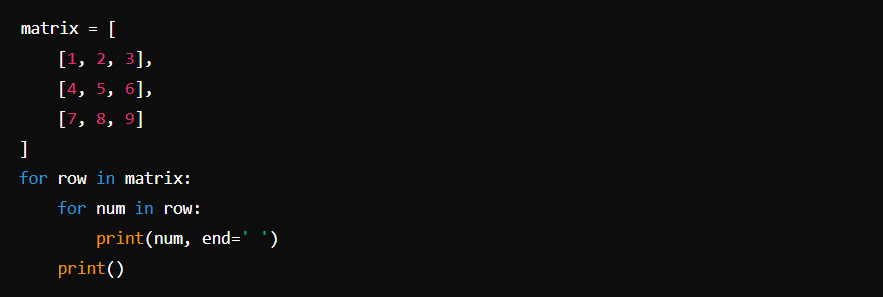Loops are essential in programming as they allow you to execute a block of code repeatedly. This tutorial covers the two main types of loops in Python—for loops and while loops—along with the break and continue statements that control the flow within these loops.
1. for Loops
A for loop is used to iterate over a sequence (e.g., a list, tuple, dictionary, set, or string) and execute a block of code for each item in the sequence.
Basic Syntax

Example with a List

This loop will print each number in the list numbers.
Example with a String

This loop will print each character in the string message.
Using range()
The range() function generates a sequence of numbers, which is particularly useful in for loops.

This loop will print numbers from 0 to 4.
2. while Loops
A while loop repeatedly executes a block of code as long as a given condition is True.
Basic Syntax

Example

This loop will print numbers from 0 to 4 and then stop because the condition count < 5 becomes False.
3. break and continue Statements
These statements provide additional control over the loop’s execution.
break Statement
The break statement is used to exit the loop immediately, regardless of the loop’s condition.
Example in a for Loop

This loop will print numbers from 0 to 4 and then exit when i equals 5.
Example in a while Loop

This loop will print numbers from 0 to 5 and then exit.
continue Statement
The continue statement skips the rest of the code inside the loop for the current iteration and moves to the next iteration.
Example in a for Loop

This loop will print only odd numbers between 0 and 9.
Example in a while Loop

This loop will print only odd numbers from 1 to 9.
4. Nested Loops
You can nest loops inside other loops. This is often used for working with multi-dimensional data structures, like lists of lists.
Example with Nested for Loops

This will print each element in the matrix in a structured format.
5. Using else with Loops
Python allows you to use an else clause with loops. The else block is executed only if the loop completes normally (i.e., not terminated by a break statement).
Example with a for Loop

This will print numbers from 0 to 4 and then print “Loop completed”.
Example with a while Loop

This will print numbers from 0 to 4 and then print “Loop completed”.
Summary
forLoops: Ideal for iterating over a sequence.whileLoops: Ideal for repeating a block of code as long as a condition isTrue.breakStatement: Exits the loop immediately.continueStatement: Skips the rest of the code in the current iteration and moves to the next iteration.- Nested Loops: Loops inside other loops for multi-dimensional data.
elsewith Loops: Executes a block of code if the loop completes normally.
Mastering these concepts will enable you to handle repetitive tasks efficiently and make your code more dynamic and powerful.